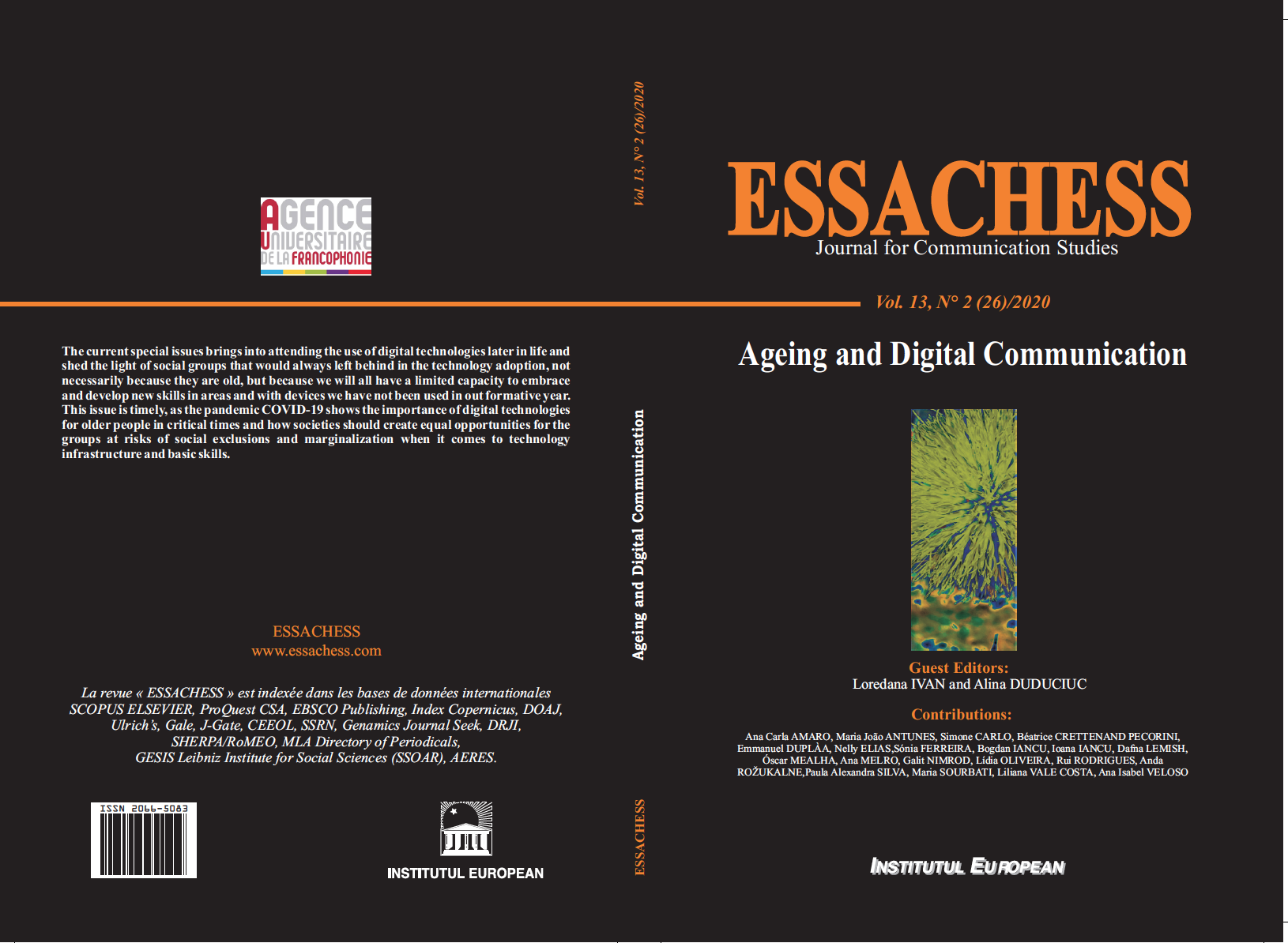Recommendations on Age-friendly and Gender-balanced Media Content Delivery of Products for Seniors: Findings from a Case Study
Recommendations on Age-friendly and Gender-balanced Media Content Delivery of Products for Seniors: Findings from a Case Study
Author(s): Paula Alexandra Silva, Maria João AntunesSubject(s): Social Sciences, Economy, Gender Studies, Education, Psychology, Media studies, Civil Society, Government/Political systems, Politics and communication, Comparative politics, Cultural Anthropology / Ethnology, Culture and social structure , Theory of Communication, Adult Education, Higher Education , State/Government and Education, Individual Psychology, Social psychology and group interaction, Social development, Social differentiation, Social Theory, Health and medicine and law, Policy, planning, forecast and speculation, Demography and human biology, Human Ecology, Gerontology, Sociobiology, Sociology of Culture, EU-Approach / EU-Accession / EU-Development, Social Norms / Social Control, ICT Information and Communications Technologies, Sociology of Politics, Inclusive Education / Inclusion, Politics and Identity, Identity of Collectives
Published by: ESSACHESS
Keywords: social media; gender; ageism; digital media; seniors
Summary/Abstract: ociety is ageing at an unprecedented pace. In tandem, the number of technology-enabled solutions targeted at older adults continues to rise. It is therefore important to understand how to best communicate these solutions to seniors and facilitate use and adoption. To develop an understanding of what could be an improved strategy of communication and media content delivery for companies that provide older adults with technology-based solutions is the goal of this research. Aware of the potential stereotypes that may emerge towards the ageing population, this paper takes a special interest on ageism and gender to determine imbalances. With this in mind, this paper conducts an in-depth case study of the online presence of a company that developed a digital product for seniors that has been nominated for a Prize on Best Practice on Active and Healthy Ageing. Findings concerning the communication strategy of the company are extracted based on the analysis of their website and their five social media profiles. In total 120 posts were inspected, containing 120 text excerpts, 352 pictures, and 21 videos. Results show that the organisation sustains a continuous engagement with both seniors and the seniors’ organisations that use their product, privileging a relationship of close proximity. The representation of older adults is one that shows exceptionally happy and active seniors, who are surrounded by an aura of admiration. There seem to be no considerable differences with regards to gender.
Journal: ESSACHESS - Journal for Communication Studies
- Issue Year: 13/2020
- Issue No: 26 (2)
- Language: English

